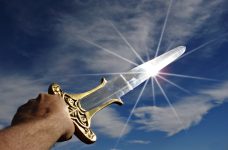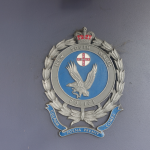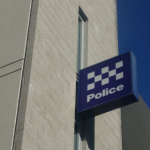Should the PM be Allowed to Issue Knighthoods?

If you’ve been watching the news lately, you may be surprised to hear that the Prime Minister has recently awarded two knighthoods.
The recipients are the Queen’s husband, Prince Philip, as well as Defence Force Chief Angus Houston, who was last year instrumental in co-ordinating the search efforts for the ill-fated MH370 flight.
Yet while many Australians will no doubt honour these worthy recipients, the decision to award knighthoods has drawn criticism from some of Australia’s key politicians, including Opposition leader Bill Shorten, who labelled the awards ‘anachronistic.’
What is a Dame or Knighthood?
A knighthood or damehood is known as a ‘Knight of the Order of Australia’ when issued by an Australian leader.
It is an award that recognises ‘extraordinary and pre-eminent achievement and merit of the highest degree in service to Australia or to humanity at large.’
Dame or Knighthoods represent the highest Order of Australia awards.
Other Orders include the Companion of the Order of Australia, Officer of the Order of Australia, Member of the Order of Australia and Medal of the Order of Australia.
While the awards generally seek to recognise outstanding Australians, they may also be issued to non-citizens where they can demonstrate exceptional achievements.
A total of four Dame or Knighthoods may be issued each year to Australian citizens, while awards to non-citizens are not included in this quota.
The Prime Minister has the power to choose candidates for the Order, however his choices must be approved by the Queen.
A Brief History of Dame and Knighthoods
The issuance of dame and knighthoods in Australia has enjoyed a somewhat tumultuous history.
Originally established in 1976 by the Queen at the request of Prime Minister Malcolm Fraser, the orders were abolished a mere decade later on the advice of Prime Minister Bob Hawke.
In its place, the Order of Australia was established in order to promote a sense of Australian identity.
During their brief existence, a total of twelve knights and two dames were appointed.
Reasons cited for the Hawke government’s decision to remove Knights and Dames from the Order include a move away from Imperialism and our British roots, and a desire to place more emphasis on our independent Australian identity and status.
Many at the time felt that the issuance of Dame and Knighthoods represented a continuing link to the British Empire, despite the passage of the Australia Act in 1986, which removed all power of the UK government to create or amend Australian laws.
Yet in a controversial move, the conservative Abbott government last year made the decision to reintroduce knights and dames.
Among the first recipients of the newly reinstated award included then-Governor General, Quentin Bryce, and current Governor-General Peter Cosgrove.
Labor was quick to criticise the decision to reinstate the Order, and opposition Leader Bill Shorten has already suggested that his party will once again abolish the Order if re-elected in 2016.
The Abbott government’s decision has also attracted criticism from fellow Liberal party members, with some saying that they were not approached for input as to who should receive the award.
Some of the Prime Minister’s colleagues have even stated that they would have opposed the knighthoods had they been consulted, with many suggesting that they herald a move back to Australia’s British roots, rather than recognising our progression as an independent nation.
The decision to announce the appointments on Australia Day has cast somewhat of a shadow over our national day of celebration, with many suggesting that it has further cemented our relationship with the British Empire, thereby detracting from our sense of Australian identity.
Some have also suggested that the decision perpetuates a class and gender divide which Australia had previously sought to dispose of.
They have pointed the finger at the PM for reneging on his previous statement that the award would be reserved for ‘Australians whose contributions to national life were thrust upon them rather than sought,’ reminding him that the decision to appoint Prince Phillip as a knight reflects a culture of partisanship.
However, the PM has defended his decision, stating that both candidates were worthy recipients for the award who had made positive contributions to Australian society.
There is no doubt that both recipients have contributed immensely to Australian society.
Prince Philip, for instance, has led a diverse life, serving in a number of naval positions and as a patron of numerous organisations.
He is also the namesake of the Duke of Edinburgh Award; an award program aimed at encouraging young Australians to serve the community, gain new skills and participate in challenging physical activities.
Similarly, Angus Houston has led a rich career, serving as Chief of the Air Force and the Defence Force, and heading numerous associations and operations, including the search for Malaysia Airlines Flight 370.
But despite their achievements, the debate continues as to whether dame and knighthoods are the appropriate mechanism for recognising such contributions.
Follow our Blog for further interesting posts and articles.






